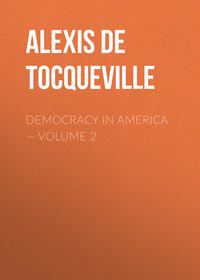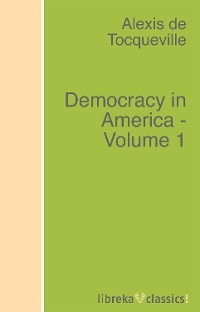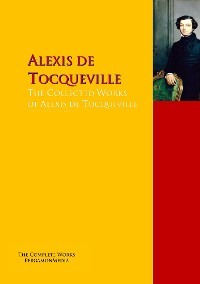 полная версия
полная версияThe State of Society in France Before the Revolution of 1789
Ban des Vendanges.—This was still practised throughout the whole of the kingdom in the eighteenth century. It was a simple right of police attached to the right of haute justice. In order to exercise it, the Seigneur, who was Haut Justicier, did not need to possess any other title. The ban des vendanges was obligatory upon everybody. The coutumes of Burgundy give the Seigneur the right of gathering in his vintage a day before any other vine proprietor.
Droit de Banvin.—This was a right still possessed by a quantity of Seigneurs (as our authors have it), either by custom or special title, to sell the wine grown upon their manors for a certain period of time, in general a month or forty days, before any one else. Among the grandes coutumes those of Tours, Anjou, the Maine, and La Marche alone established it, and had regulations for it. A verdict of the Cour des Aides, dated 28th August, 1751, authorises publicans (as an exception to the common rule) to sell wine during the banvin; but this must have referred only to the wine of the Seigneur, made from that year’s growth. The coutumes that establish and regulate the right of banvin generally require that it should be founded upon legal title.
Droit de Blairie was a right belonging to the Seigneur, who was Haut Justicier, to grant permission to the inhabitants to have their cattle graze upon lands situated throughout his jurisdiction, or upon waste lands. This right did not exist in any parts regulated by droit écrit; but it was common enough in those where the droit coutumier was in force. It was to be found under different denominations, more particularly in the Bourbonnais, the Nivernais, Auvergne, and Burgundy. This right rested upon the supposition that the whole territory originally belonged to the Seigneur, in such wise that, after the distribution of the greater part into fiefs, cencites, and other concessions of lands upon quit-rents, there still remained portions which could only be used for waste pasture-ground, and of which he might grant the temporary use to others. The blairie was established in several coutumes; but it could only be claimed by a Seigneur who was Haut Justicier, and was maintained only by some special title, or at least by old claims supported by long possession.
Péages.—According to our authors, there originally existed a prodigious number of manorial tolls upon bridges, rivers, and roads. Louis XIV. did away with a great number of them. In 1724 a commission, nominated to examine into the titles by which the tolls were claimed, suppressed twelve hundred of them; and, in 1765, they were still being constantly suppressed. ‘The principle observed in this respect,’ says Renauldon, ‘was that, inasmuch as the toll was a tax, it was necessary to be founded not only upon legal title, but upon one emanating from the sovereign.’ The toll was levied ‘De par le Roi.’ One of the conditions of the toll was that it should be established by tarif regulating the dues, which each kind of merchandise had to pay. It was necessary that this tarif should be approved by a decree of the Council. ‘The title of concession,’ says one author, ‘had to be followed by uninterrupted possession.’ In spite of these precautions legally taken, it appears that the value of the tolls had greatly increased in later times. ‘I know one toll,’ says the same author, ‘that was farmed out, a century ago, at 100 livres, and now brings in 1400; and another, farmed at 39,000 livres, that brings in 90,000.’ The principal ordinances or principal decrees that regulated the right of toll, were paragraph 29 of the Ordinance of 1669, and the Decrees of 1683, 1693, 1724, 1775.
The authors I have quoted, although in general favourable enough to feudal rights, acknowledge that great abuses were committed in the levying of the tolls.
Bacs.—The right of ferries differed materially from the right of toll. The latter was only levied upon merchandise; the former upon individuals, animals, and carriages. It was necessary that this right, in order to be exercised, should likewise be authorised by the King; and the dues, to be levied, had to be fixed by the same decree of Council that established and authorised it.
Droit de Leyde (to which many other names have been given in different places) was a tax levied upon merchandise brought to fairs and markets. Many lords of the manor (as appears by our feudistes) considered this right as one attached to the right of haute justice, and wholly manorial, but quite mistakenly, inasmuch as it could only be authorised by the King. At all events, this right only belonged to the Seigneur, who was Haut Justicier: he levied the police fines, to which the exercise of the right gave occasion. It appears, however, that, although by theory the droit de leyde could only emanate from the King, it was frequently set up solely upon the basis of feudal title or long possession.
It is very certain that fairs could not be established otherwise than by Royal authorisation.
The lords of the manor, however, had no need of any precise title, or any concession on the part of the King, for the exercise of the right of regulating the weights and measures to be used by their vassals in all fairs and markets held upon the manor. It was enough for the right to be founded upon custom and constant possession. Our authors say that all the Kings, who, one after the other, were desirous of re-establishing uniformity in the weights and measures, failed in the attempt. Matters had been allowed to remain at the same point where they were when the old coutumes were drawn up.
Chemins. (Rights exercised by the lords of the manor upon roads.)—The high roads, called ‘Chemins du Roi’ (King’s highway), belonged, in fact, to the sovereigns alone; their formation, their reparation, and the offences committed upon them, were beyond the cognisance of the Seigneurs or their judges. The by-roads, to be met with on any portion of a Seigneurie, doubtless belonged to such Seigneurs as were Hauts Justiciers. They had all the rights of voirie and police upon them, and their judges took cognisance of all the offences committed upon them, except in Royal cases. At an earlier period the Seigneurs had been obliged to keep up the high roads passing through their seigneurie, and, as a compensation for the expenses incurred in these repairs, they were allowed the dues arising from tolls, settlement of boundaries, and barriers; but, at this epoch, the King had resumed the general direction of the high roads.
Eaux.—All the rivers, both navigable and floatable (admitting the passage of rafts), belonged to the King, although they flowed through the property of lords of the manor, and in spite of any title to the contrary. (See Ordinance of 1669.) If the lords of the manor levied any dues upon these rivers, it was those arising from the rights of fishing, the mills, ferry-boats, and bridge-tolls, &c., in virtue of concessions emanating only from the King. There were some lords of the manor who still arrogated to themselves the rights of jurisdiction and police upon these rivers; but this manifestly only arose from usurpation, or from concessions improperly acquired.
The smaller rivers unquestionably belonged to the Seigneurs through whose property they flowed. They possessed in them the same rights of property, of jurisdiction, and police, which the King possessed upon the navigable rivers. All Seigneurs Hauts Justiciers were universally the lords of the non-navigable rivers running through their territory. They wanted no other legal title for the exercise of their claims than that which conferred the right of haute justice. There were some customs, such as the Coutume du Berri, that authorised private individuals to erect a mill upon the seignorial river passing through the lands they occupied, without the permission of the Seigneur. The Coutume de Bretagne only granted this right to private personages who were noble. As a matter of general right, it is very certain that the Seigneur Haut Justicier had alone the right of erecting mills throughout every part of his jurisdiction. No one was entitled to erect barriers for the protection of his property without the permission of the judges of the Seigneur.
Fontaines.—Puits.—Routoirs.—Étangs.—The rain-water that fell upon the high roads belonged exclusively to the Seigneurs Hauts Justiciers; they alone were enabled to dispose of it. The Seigneur Haut Justicier possessed the right of constructing ponds in any part throughout his jurisdiction, and even upon lands in the possession of those who resided under it, upon the condition of paying them the price of the ground put under water. Private individuals were only able to make ponds upon their own soil; and, even for this, many coutumes require that permission should be obtained of the Seigneur. The coutumes, however, thus requiring the acquiescence of the Seigneur, establish that it is to be given gratuitously.
La Pêche.—The right of fishing on navigable or floatable rivers belonged only to the King, and he alone could make grants of this right. The Royal Judges alone had the right of judging offences against the right of fishery. There were many Seigneurs, however, who exercised the right of fishing in these streams; but they either possessed by concession made by the King, or had usurped it. No person could fish, even with the rod, in non-navigable rivers without permission from the Seigneur Haut Justicier within whose limits they flowed. A judgment (dated April 30th, 1749) condemns a fisherman in a similar case. Even the Seigneurs themselves, however, were obliged, in fishing, to observe the general regulations respecting fisheries. The Seigneur Haut Justicier was enabled to give the right of fishing in his river to tenants in fief, or à cens.
La Chasse.—The right of the chase was not allowed to be farmed out like that of fishing. It was a personal right, arising from the consideration that it belonged to the King, and that the nobles themselves could not exercise it, in the interior of their own jurisdiction, without the permission of the King. This doctrine was established in an Ordinance of 1669 (par. 30). The judges of the Seigneur had the power of taking cognisance of all offences against the rights of the chase, except in cases appertaining to bêtes rousses (signifying, it would appear, what were generally called ‘grosses bêtes’—stags, does, &c.), which were considered Royal.
The right of shooting and hunting was more interdicted to the non-noble than any other. The fee fief of the non-noble did not even bestow it. The King never granted it in his own hunt. So closely observed was this principle, and so rigorous was the right considered, that the Seigneur was not allowed to give any permission to hunt. But still it did constantly occur that Seigneurs granted such permissions not only to nobles but to non-nobles. The Seigneur Haut Justicier possessed the faculty of hunting and shooting on any part of his own jurisdiction, but alone. He was allowed to make regulations and establish prohibitions upon matters appertaining to the chase throughout its extent. Every Seigneur de Fief, although not having the feudal power of judicial courts, was allowed to hunt and shoot in any part of his fief. Nobles who possessed neither fief nor jurisdiction were allowed to do so upon the lands belonging to them in the immediate neighbourhood of their dwelling-houses. It was decided that the non-noble possessing a park upon the territory of a Seigneur Haut Justicier was obliged to leave it open for the diversion of the lord. But this judgment was given as long ago as 1668.
Garennes.—Rabbit-warrens could not be established without title-right. Non-nobles, as well as nobles, were allowed to have rabbit-warrens; but the nobles alone were allowed to keep ferrets.
Colombiers.—Certain coutumes only give the right of colombiers à pied (dovecots standing apart from a building) to the Seigneurs Hauts Justiciers; others grant it to all holders of fiefs. In Dauphiny, Brittany, and Normandy, no non-noble was allowed to possess dovecot, pigeon-house, or aviary; the nobles alone were allowed to keep pigeons. The penalties pronounced against those who killed the pigeons were extremely severe: the most afflictive punishments were sometimes bestowed.
Such, according to the authors above cited, were the principal feudal rights still exercised and dues still levied in the second half of the eighteenth century. ‘The rights here mentioned,’ they add, ‘are those generally established at the present time. But there are still very many others, less known and less widely practised, which only occur in certain coutumes, or only in certain seigneuries, in virtue of peculiar titles.’ These rarer and more restricted feudal rights, of which our authors thus make mention, and which they enumerate, amount to the number of ninety-nine; and the greater part of them are directly prejudicial to agriculture, inasmuch as they give the Seigneurs certain rights over the harvests, or tolls upon the sale or transport of grain, fruit, provisions, &c. Our authors say that most of these feudal rights were out of use in their day; I have reason to believe, however, that a great number of these dues were still levied, in some places, in 1789.
After having studied, among the writers on feudal rights in the eighteenth century, the principal feudal rights still exercised, I was desirous of finding out what was their importance in the eyes of their contemporaries, at least as regarded the fortunes of those who levied them and those who had to pay them.
Renauldon, one of the authors I have mentioned, gives us an insight into this matter, by laying before us the rules that legal men had to follow in their valuation of the different feudal rights which still existed in 1765, that is to say, twenty-four years before the Revolution. According to this law writer, the rules to be observed on these matters were as follow:—
Droits de Justice.—‘Some of our coutumes,’ he says, ‘estimate the value of justice haute, basse, or moyenne at a tenth of the revenues of the land. At that time the seignorial jurisdiction was considered of great importance. Edmé de Fréminville opines that, at the present day, the right of jurisdiction ought not to be valued at more than a twentieth of the revenues of the land; and I consider this valuation still too large.’
Droits Honorifiques.—‘However inestimable these rights may be considered,’ declares our author, a man of a practical turn of mind, and not easily led away by appearances, ‘it would be prudent on the part of those who make valuations to fix them at a very moderate price.’
Corvées Seigneuriales.—Our author, in giving the rules for the estimation of the value of forced labour, proves that the right of enforcing it was still to be met with sometimes. He values the day’s work of an ox at 20 sous, and that of the labourer at 5 sous, with his food. A tolerably good indication of the price of wages paid in 1765 may be gathered from this.
Péages.—Respecting the valuation of the tolls our author says, ‘There is not one of the Seignorial rights that ought to be estimated lower than the tolls. They are very precarious. The repairs of the roads and bridges—the most useful to the commerce of the country—being now maintained by the King and the provinces, many of the tolls become useless nowadays, and they are suppressed more and more every day.
Droit de Pêche et de Chasse.—The right of fishing may be farmed out, and may thus give occasion for valuation. The right of the chase is purely personal, and cannot be farmed out; it may consequently be reckoned among the honorary rights but not among the profitable rights, and cannot, therefore, be comprehended in any valuation.
Our author then mentions more particularly the rights of banalité, banvin, leyde, and blairie, and thus proves that these rights were those most frequently exercised at that time, and that they maintained the greatest importance. He adds, ‘There is a quantity of other seignorial rights, which may still be met with from time to time, but which it would be too long and indeed impossible to make mention of here. But intelligent appraisers will find sufficient rules, in the examples we have already given, for the estimation of those rights of which we do not speak.’
Estimation du Cens.—The greater number of the coutumes place the estimation of the cens, au denier 30 (3-1/3 per cent.). The high valuation of the cens arises from the fact that it represents at the same time all such remunerative casualties as the lods et ventes, for instance.
Dîmes inféodées.—Terrage.—The tithes in fief cannot be estimated at less than 4 per cent.; this sort of property calling neither for care, culture, nor expense. When the terrage or champart includes lods et ventes, that is to say, when the land subject to these dues cannot be sold without paying for the right of exchange to the Seigneur, who has the right of tenure in capite, the valuation must be raised to 3-1/3 per cent.; if not it must be estimated like the tithes.
Les Rentes foncières, which produced no lods et ventes or droit de retenu (that is to say, which are not seignorial revenue), ought to be estimated at 5 per cent.
ESTIMATE OF THE DIFFERENT HEREDITARY ESTATES EXISTING IN FRANCE BEFORE THE REVOLUTIONWe recognise in France, says this writer, only three kinds of estates:—
(1.) The Franc Alleu.—This was a freehold estate, exempt from every kind of burden, and subject neither to seignorial duties nor dues, either profitable or honorary.
There were both noble and non-noble francs alleux. The noble franc alleu had its right of jurisdiction or fiefs dependent on it, or lands paying quit-rents: it followed all the observances of feudal law in subdivision. The non-noble franc alleu had neither jurisdiction, nor fief, nor censive, and was heritable according to the laws affecting non-nobles. The author looks upon the holders of francs alleux as alone possessing complete property in the land.
Valuation of Estates in Franc Alleu.—They were valued the highest of all. The coutumes of Auvergne and Burgundy put the valuation of them as high as 40 years’ purchase. Our author opines that their valuation at 30 years’ purchase would be exact. It must be observed that all non-noble francs alleux placed within the limits of a seignorial jurisdiction were subject to this jurisdiction. They were not in any dependence of vassalage to the Seigneur, but owed submission to a jurisdiction which had the position of that of the Courts of the State.
(2.) The second kind was that of estates held in fief.
(3.) The third was that of estates held on quit-rents, or, in the law language of the time, Rotures.
Valuation of an Estate held in Fief.—The valuation was less, according as the feudal burdens on it were greater.
(1.) In the parts of the country where written law was observed, and in many of the coutumes, the fiefs lay only under the obligation of what was called ‘la bouche et les mains,’ that is to say, that of doing homage.
(2.) In other coutumes the fiefs, besides the obligation of ‘la bouche et les mains,’ were what was called ‘de danger,’ as in Burgundy, and were subject to the commise, or feudal resumption, in case the holder of the property should take possession without having rendered submission or homage.
(3.) Other coutumes, again, as in that of Paris and many others, subject the fiefs not only to the obligation of doing homage, but to the rachat, the quint, and the requint.
(4.) By other coutumes, also, such as that of Poitou and a few others, they were subjected to chambellage dues, the cheval de service, &c.
Of these four all estates of the first category were valued more highly than the others.
The coutume of Paris laid their valuation at 20 years’ purchase, which is looked upon by our author as tolerably correct.
Valuation of Estates ‘en roture’ and ‘en censive.’—In order to come to a proper valuation, these lands have to be divided into three classes:—
(1.) Estates held simply on quit-rents.
(2.) Those which, beside the quit-rent, are subject to other kinds of feudal servitude.
(3.) Those held in mortmain, à taille réelle, en bordelage.
Only the first and second of these three forms of non-noble property were common in the eighteenth century; the third was extremely rare. The valuations to be made of them, according to our author, were less on coming down to the second class, and still less on coming down to the third. Men in possession of estates of the third class were not even, strictly speaking, their owners, inasmuch as they were not able to alienate them without permission from the Seigneur.
Le Terrier.—The feudistes, whom we have cited above, point out the following rules observed in the compilation or renewal of the seignorial registers, called ‘Terriers,’ mention of which has been made in many parts of the work. The Terrier was a single register, in which were recorded all the titles proving the rights appertaining to the seigneurie, whether in property or in honorary, real, personal, or mixed rights. All the declarations of the payers of the cens, the usages of the seigneurie, the leases à cens, &c., were inserted in it. We learn by our authors that, in the coutume of Paris, the Seigneurs were permitted to renew their registers every thirty years at the expense of their censitaires: they add, however, ‘It may be considered a very fortunate circumstance, nevertheless, when a new one may be found once a century.’ The Terrier could not be renewed (it was a vexatious business for all the persons dependent on the seigneurie) without obtaining, either from the Grande Chancellerie (if in cases of seigneuries situated within the jurisdiction of different Parliaments), or of the Parliaments (in the contrary case), an authorisation which was denominated ‘Lettres à Terrier.’ The notary who drew them up was nominated by the judicial authorities. All the vassals, noble or non-noble, the payers of the cens, holders of long leases (emphytéotes), and personages subject to the jurisdiction of the seigneurie were bound to appear before this notary. A plan of the seigneurie had to be annexed to the Terrier.
Besides the Terrier, the seigneurie was provided with other registers, called ‘lièves,’ in which the Seigneurs or their farmers inscribed the sums received in payment of the cens, with the names of those who paid and the dates of the receipts.
1
I have more especially used the archives of some of the great Intendancies, particularly that of Tours, which are very complete and relate to a very extensive district placed in the centre of France, and peopled by a million of inhabitants. My thanks are due to the young and able keeper of these records, M. Grandmaison. Other districts, amongst them that of the Île-de-France, have shown me that business was transacted in the same manner in the greater part of the kingdom.
2
Letters on a Regicide Peace.
3
See Note I., on the Power of the Roman Law in Germany.





